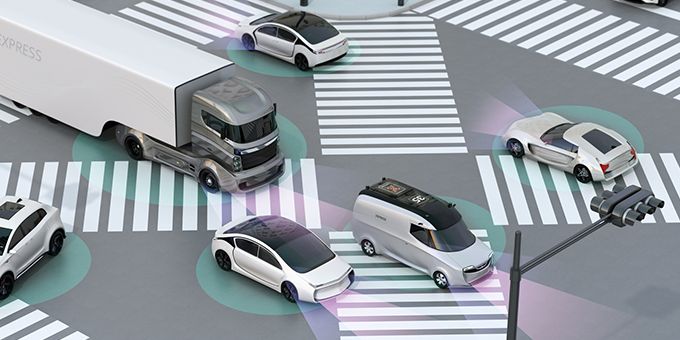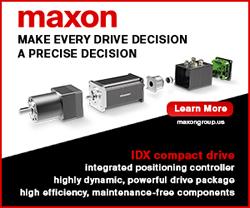3D machine vision technology is playing a primary role in reshaping numerous industries, such as manufacturing, healthcare and autonomous vehicles
 Exploring 3D Trends in Machine Vision Industries: Tomorrow’s Vision Today
Exploring 3D Trends in Machine Vision Industries: Tomorrow’s Vision Today

Dara Mottahed Product Marketing | Pleora Technologies
Machine vision technology has come a very long way in recent years. With this, the integration of 3D capabilities has become a real game-changer for numerous industries. Let’s explore some exciting trends and advancements in 3D machine vision technology that are reshaping the way we perceive and interact with the world around us. From manufacturing to healthcare, 3D machine vision is driving innovation and providing solutions to complicated problems.
3D Machine Vision in manufacturing industries has observed a significant shift towards 3D machine vision, revolutionizing quality control and production processes. There are several key trends in this sector including robot guidance, defect detection and bin picking.
With robot guidance, 3D machine vision systems are being implemented to guide robots in complex tasks such as pick-and-place operations, ensuring precision and flexibility in manufacturing lines. Defect detection showcases the ability to capture and analyze 3D data. These systems are highly effective in identifying defects and inconsistencies in products, reducing waste, and improving overall quality. Lastly, bin picking is the automated process of picking objects from bins and is a crucial aspect of modern manufacturing. 3D vision systems can now identify, locate, and pick objects with varying shapes and sizes, optimizing efficiency and flexibility.
3D Machine Vision in Healthcare
In the healthcare industry, the implementation of 3D machine vision has provided new possibilities for diagnostics, surgery, and patient care. There are several emerging trends such as surgical assistance, medical imaging and telemedicine that are certainly worth taking note of.
Surgical assistance empowers surgeons to use 3D machine vision to enhance precision during surgeries, such as laparoscopic procedures. This technology offers a more detailed view of the patient’s anatomy, thus reducing risk and recovery time. Medical Imaging relies upon 3D machine vision contributing to the development of advanced medical imaging techniques, including 3D CT scans and MRI. These innovations provide a more accurate and comprehensive understanding of a patient’s condition. Additionally, Telemedicine benefits from 3D machine vision with remote diagnostics and consultations having seen significant improvements, enabling doctors to assess patients more effectively and provide diagnoses based on highly detailed visual data.
3D Machine Vision in Autonomous Vehicles
The rise of autonomous vehicles can largely be thanks to the integration of 3D machine vision technology. There are many trends in this nascent field including LiDAR Integration, Object Recognition and Environmental Awareness.
Photo by ThisisEngineering RAEng on Unsplash
LiDAR integration relies upon 3D LiDAR sensors, coupled with machine vision, enabling autonomous vehicles to create real-time 3D maps of their surroundings, enhancing both navigation and safety. With object recognition, 3D machine vision identifies and classifies various objects on the road, including pedestrians, cyclists, and other vehicles, contributing to safer and more efficient autonomous driving. Not to be forgotten, environmental awareness provides systems that assess road conditions and adapt to environmental changes, such as road construction or adverse weather conditions, improving the overall reliability of autonomous vehicles.
3D machine vision technology is demonstrating a modern and fundamental role in reshaping various industries, ranging from manufacturing and healthcare to autonomous vehicles. The ability to capture and process 3D data is empowering machines and robots alike to see and understand the world in ways that were once reserved only for humans. As technology continues to evolve, we can expect even more innovative applications and advancements, making our lives safer, more efficient, and more connected than ever before. 3D is excitingly embryonic and dynamic so do stay tuned for more developments!
The content & opinions in this article are the author’s and do not necessarily represent the views of RoboticsTomorrow

Pleora Technologies
Pleora is a leading supplier of AI, embedded, and sensor networking solutions. The company was formed in 2000 and has gained a well-earned reputation for technology leadership and innovation. Manufacturers rely on our products, standards expertise, and systems knowledge to bypass development and integration complexities in a diverse range of demanding real-time imaging application for the industrial automation, security & defense, and medical imaging markets. Visit www.pleora.com
Other Articles
Utilizing AI in the Manufacturing Space
Evolution of Embedded Vision Technologies for Robotics
USB 3.0 Steps Up To The Plate
More about Pleora Technologies
Comments (0)
This post does not have any comments. Be the first to leave a comment below.
Featured Product

